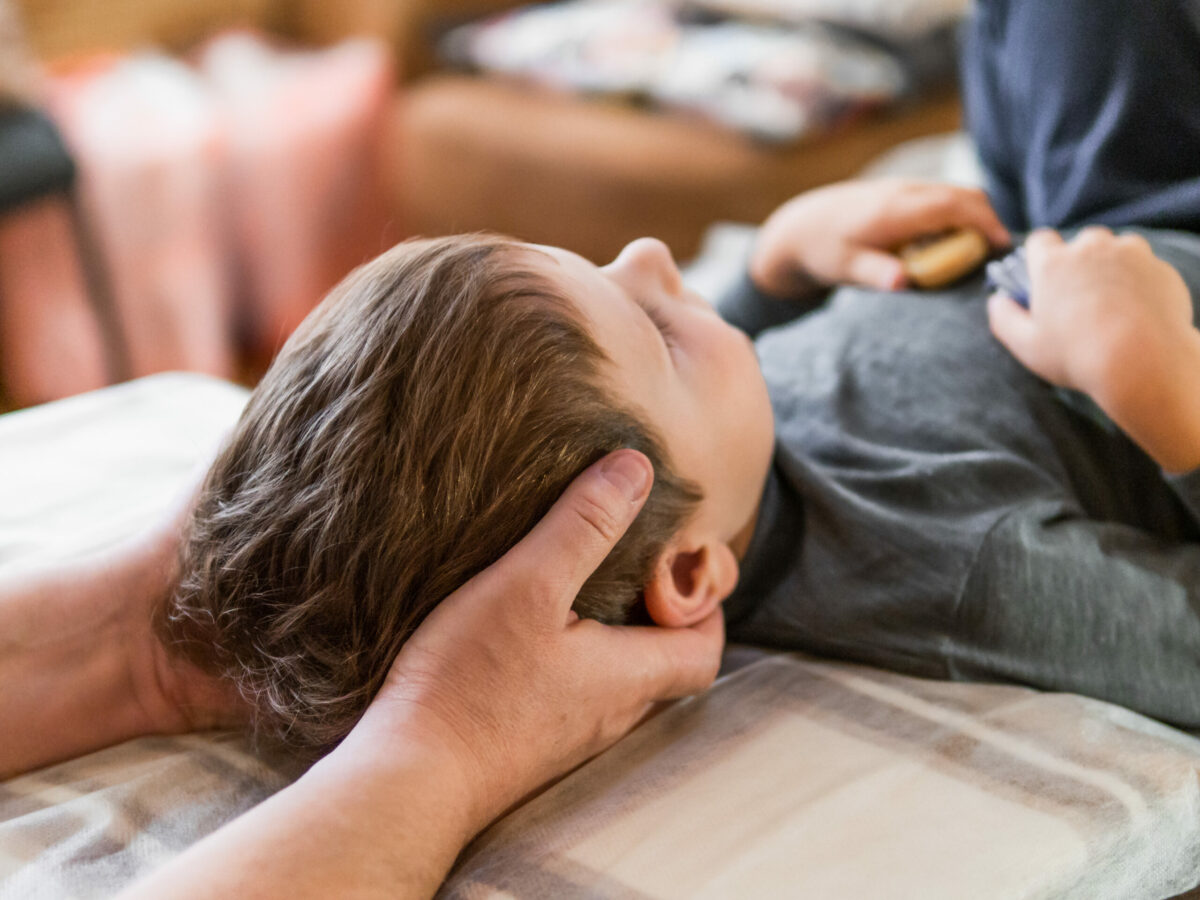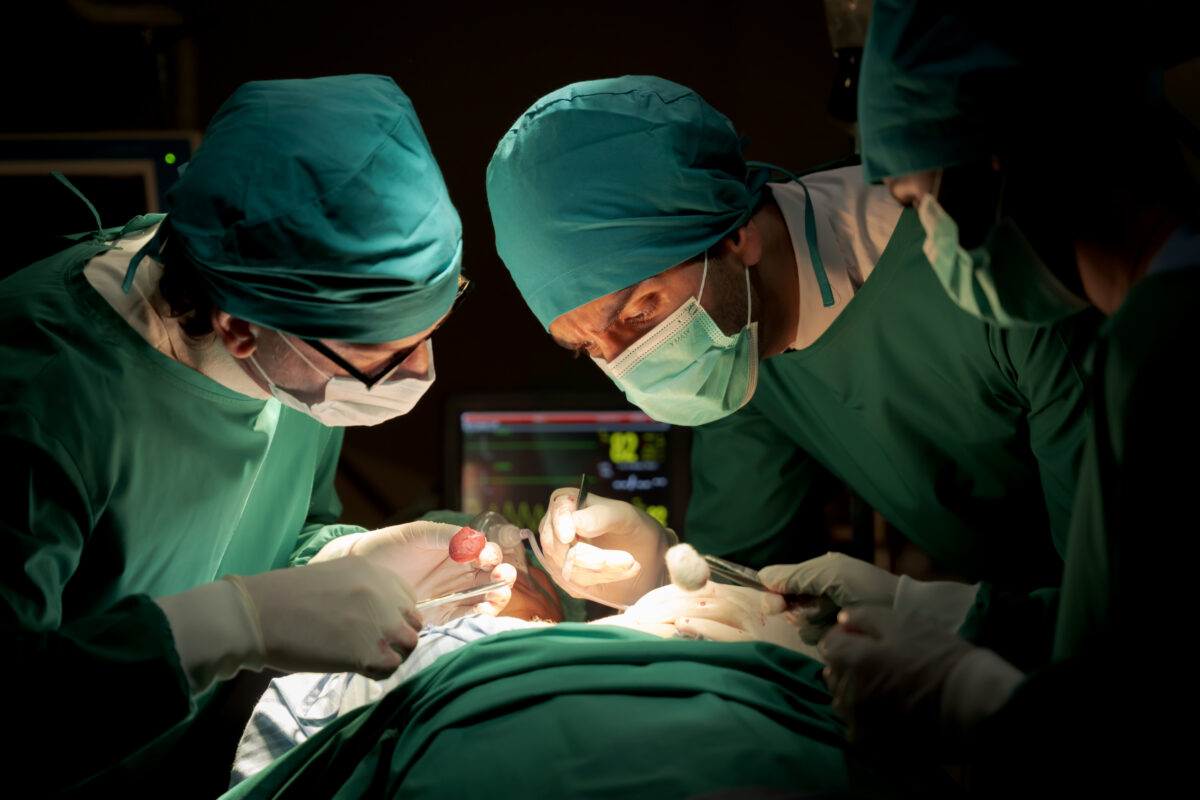This is a health condition that is present at birth. It is known as craniosynostosis and it involves fibrous joints between the bones of the baby’s skull that close prematurely. It occurs before the brain is completely developed. As a result, the baby’s head becomes deformed.
In normal circumstances, the sutures remain flexible in infants, which allows the expansion of the skull until the brain grows. There are two major fontanels (large soft spots on the top and back of the head). These are known as the anterior fontanel which is located behind the baby’s forehead and the posterior fontanel located at the back. However, each skull side has a small fontanel.
In most cases, this condition involves just one cranial suture but sometimes the condition can affect multiple sutures (multiple suture craniosynostosis). Rarely, genetic syndromes can provoke this disease (syndromic craniosynostosis).
The primary craniosynostosis treatment is surgery that helps to correct the head shape and allow the growth of the brain. Furthermore, early diagnosis and treatment can help to prevent complications. In addition, in severe cases, some neurological problems can appear.
Symptoms
The symptoms of this condition are noticeable usually at birth and they become more apparent during the baby’s development. The severity of symptoms depends on how much sutures fuse. Check below some symptoms:
- Development of a raised and hard ridge along negatively affected sutures
- Misshapen skull
Craniosynostosis Types
There are different craniosynostosis types. While most of them involve just one cranial suture, others involve a fusion of several sutures. Commonly, multiple sutures are linked with certain genetic syndromes known as syndromic craniosynostosis.
The names of craniosynostosis types are given according to affected sutures. Check below some examples:
- Sagittal (scaphocephaly) – This is one of the most common types of craniosynostosis and it involves the fusion of the sagittal sutures which begin from the front to the back of the skull top. As a result, the head grows narrow and long (scaphocephaly).
- Coronal – In such cases, the premature fusion starts from each ear to the top of the skull. It usually provokes the forehead to flatten. Other head changes include nose turning, raised eye sockets, and others. In case both coronal sutures prematurely fuse, the head appears wide and short.
- Metopic – In such cases premature fusion begins from the top of the nose bridge up to the midline of the forehead. This craniosynostosis type makes the head look triangular which widens in the head’s back. Healthcare providers also call this type trigonocephaly.
- Lambdoid – This craniosynostosis type happens quite rarely and it is known as lambdoid synostosis. It involves lambdoid suture which starts along the head’s back. As a result, one side of the head can appear flat.
Additionally, not every time a baby’s misshapen head means craniosynostosis. For instance, a flat head of the baby can happen due to lying on the same part for long periods. However, it is treatable by regular changing of the head positions and with helmet therapy (cranial orthosis) in severe cases.
Causes
Usually, physicians cannot identify the exact cause of craniosynostosis. Sometimes, doctors associate this disease with genetic disorders.
- Nonsyndromic craniosynostosis – This is the most common craniosynostosis type but the exact cause is not known. Experts think there is a combination of factors that contribute to this condition. These include genetic and environmental factors.
- Syndromic craniosynostosis – Some genetic syndromes provoke this craniosynostosis type. These include Apert syndrome, Pfeiffer syndrome, and Crouzon syndrome.
What Are The Possible Craniosynostosis Complications?
If you are not treating this condition it may lead to some unpleasant complications. For example poor self-esteem, social isolation, and permanent misshapen head and face. Moreover, if the baby does not receive the treatment it also may lead to elevated intracranial pressure. As a result, the following health problems can occur. Examples include:
- Cognitive impairment
- Vision problems (including blindness)
- Developmental delays
- Seizures
- Headaches and others
Diagnosis
Commonly, to diagnose this condition the patient should visit a pediatric neurosurgeon or a specialist in reconstructive and plastic surgery. Check below some tests used to confirm the condition:
- Physical examination – Doctors perform this examination to check for head features including suture ridges and unbalanced facial features.
- Imaging tests – CT (computerized tomography) scan or MRI (magnetic resonance imaging) scan are used to make images of the baby’s skull and determine if there are fused sutures. Sometimes, physicians can use cranial ultrasound.
- Genetic tests – If your healthcare professional suspects the condition is due to a genetic syndrome, you may need to do some genetic tests.
Treatment
If a baby experiences a mild form of craniosynostosis, usually the treatment is not needed. In such cases, doctors advise a specially molded helmet that will help the baby’s brain growth and correct the skull shape.
In any case, for most babies the main treatment is surgery. The duration and type of the surgery depend on the craniosynostosis type and its cause. Some children experience more than one surgery to correct the head appearance.
The treatment goal is to fix head shape, avoid brain damage, and allow enough space for brain development. Check below some treatment options:
Surgery
Commonly, craniofacial surgeons and neurosurgeons (specialists in surgery of the brain) perform this procedure. However, the surgery can be performed by open surgery or endoscope. Fortunately, both methods are safe and low risk of complications.
- Open surgery – This procedure is usually done for children older than 6 months. It involves an incision in the scalp and cranial bones. Thereafter, surgeons will reshape the affected skull region. In most cases, the baby should stay in a hospital for 3-4 days and blood transfusion. While one procedure is enough for someone, other babies may need multiple interventions to correct the head shape.
- Endoscopic surgery – This surgery type is done usually in the early craniosynostosis stages. It involves a small tube with a camera that is inserted through small cuts in the scalp. Thereafter, the surgeon removes the impacted sutures, which help the brain develop properly. The benefits of endoscopic surgery are that the baby will stay in the hospital for one night and do not need a blood transfusion.
Frequently Asked Questions
Is craniosynostosis painful for babies?
Generally, it causes head appearance changes only. This usually does not provoke any other symptoms (including pain).
Can craniosynostosis provoke blindness?
This condition can lead to blindness if left untreated. With treatment, there is no risk of permanent visual damage. Talk with your doctor for more details.
How common is craniosynostosis?
Sagittal suture is the most common craniosynostosis and occurs more in males than females. This is considered a common health problem that occurs in 1 out of the 2,200 children. If you have additional questions, ask your healthcare provider.




